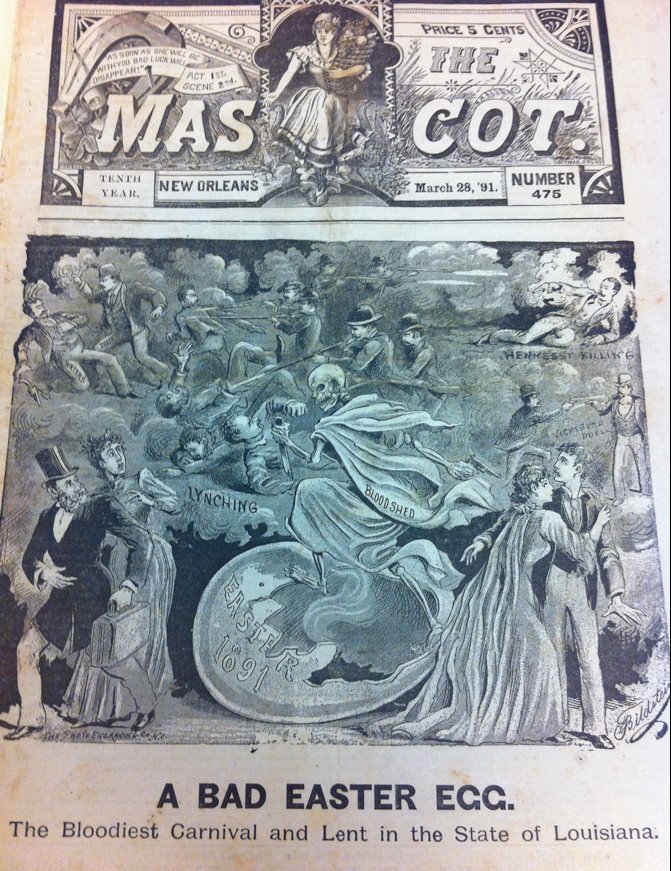On March 14, 1891, in response to the murder of police chief David Hennessy the preceding year, citizens of New Orleans stormed the local prisons and lynched eleven Italians they believed were responsible for the murders. When Hennessy was gunned down, he allegedly whispered, “Dagos did it.” Multiple arrests occurred within the Italian community and when the trials were over, all of the suspects either had mistrials or were found not guilty. The lynchings that followed were considered the largest lynching in U.S. history.
One night last year, I was at Southport Hall talking to my friend and one of the owners, Mark Bagnetto. I mentioned some of my research and he exclaimed that one of his relatives was lynched during the attack! Sure enough, I checked the records and one of the victims was an Antonio Bagnetto. He was the last of the eleven to die and his death, in fact, was one of the few that was documented in fairly graphic terms.
News of the lynchings made headlines across the country, with many of the newspapers standing in favor of the murders. The New York Times ran an article stating, “Chief Hennessy Avenged; eleven of his Italian assassins lynched by a mob.” The Mascot was against the lynchings but here is what they wrote about Antonio Bagnetto:
Execution of Bagnetto. While the crowd was still viewing the ghastly picture presented by Politez as he dangled from the lamppost at the corner of Treme and St. Ann streets there was a sudden commotion at the Orleans street or main entrance of the prison, and just as the loud hum of voices broke into a hoarse roar that went sweeping around the prison and rolled down to Congo Swuare, a narrow lane was opened in the crowd and half a dozen men dashed out beneath the low, broad archway which overhangs the main entrance, dragging something along the floor by a stout tope. At the end of the rope was the writhing form of Antonio Bagnetto, and the rope was fastened by a running noose around his neck. Swiftly those holding the rope dashed over the banquette across the roadway and to the foot of a dead tree on the up-town side of the neutral ground, their victim lying on his back and struggling as he went.
Bagnetto’s journey to the gallows tree was a short and swift, but terrible one. As he was hauled through that narrow lane in the crowd those nearest him jabbed him with their canes, beat him with sticks and kicked him as he was dragged past them, so that by the time he had reached the foot of the tree appeared to be more dead than alive.
An active man climbed the tree and threw the end of the rope over a limb, but before the weight of the prisoner was more than half off the ground the rotten limb broke and Bagnetto fell to the ground once more, apparently in a semi-conscious condition. Again the end of the rope was thrown to the man who was still in the tree. This time he passed the rope over a stout, sound limb, which proved sufficiently strong to sustain the weight of the victim who was quickly hanging far above the heads of the crowd. Bagnetto’s final struggles were soon over, as he appeared to have been mortally hurt before he was finally suspended. As the man who adjusted the rope was descending from the tree, he gave the dying man a kick with the heel of his boot on the forehead, but beyond a convulsive shudder Bagnetto gave no sign that he felt this last inflict upon him.
Thus ended the most terrible outbreak of Lynch Law ever witnessed in New Orleans.

